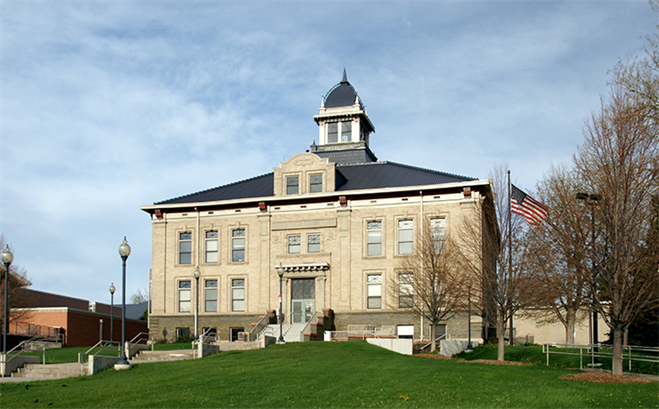From 1972 to an Agile Online Case Experience: First Steps
May 19, 2023 by Peter Friesen

Courts serve constituents through some of the highest and lowest moments in life, from those paying a traffic ticket or submitting a marriage license, to those charged with more serious crimes. Post-pandemic, there’s even more pressure on local courts to ensure not only the public is well served, but also, court staff, law enforcement, attorneys, and other justice partners.
The municipal court of Littleton, Colorado, a Denver suburb of around 50,000 residents, faced this pressure. “We were really stuck in 1972,” says Court Administrator Danielle Trujillo. "We couldn't even take a payment over the phone.” Rather than shy away from the challenge, Trujillo and team saw the courts’ outdated processes as an opportunity for a completely fresh start.
In the last few years, Littleton Municipal Court has revamped its justice process entirely, cultivating an intentional online case experience that has changed the way local leadership views its role in the community. By focusing on the following three areas, Littleton has cut case resolution time in half while offering a better online case experience:
1. Start With the Widest Service Gaps, Engage Leadership
Littleton didn’t want to change “for the sake of change,” says Trujillo. Instead, they identified the largest gaps in service, inviting local leaders to observe these shortcomings at court, ensuring there was communitywide buy-in for implementing new online tools.
Implementing online payments was the first step, which opened the conversation about new technology all around, Trujillo explained. Shortly thereafter, Littleton added virtual hearings, interactive voice response (IVR) options, and automated notifications — all integrated into the court’s case management system — making it easier for constituents to reach resolution through one unified solution.
After taking these steps, Trujillo saw better response times across all case types, along with improved satisfaction from court, police, and city employees.
“People are more willing to do what they need to get done because they see that we can be more flexible with them.”
2. Prioritize Self-Service Tools That Equally Benefit Staff
When searching for self-service technology to deliver the best online case experience, Littleton Municipal Court made it a priority to choose solutions that would better serve staff as well.
By empowering defendants to pay and appear virtually, find answers quickly with IVR, and stay on top of their cases with automated notifications, Littleton court staff is spending less time answering questions and managing in-person hearings, leaving more time to devote to other tasks. And, because their self-service tools are fully integrated with their case management system, case files can be automatically routed to key parties and more tasks are automated, cutting repetitive tasks from their daily workflow.
The combination of an improved user experience and more efficient staff workflow has cut Littleton’s case resolution time significantly. By adding more flexible options on the front end for residents to take care of their cases early, Trujillo notes that most traffic cases are resolved in around 30 days, down from 90 days. Criminal case resolution has gone from 12-18 months to six months on average.
3. Building Future-Proof Processes With SaaS
While Trujillo admits that physically seeing their servers on-site felt reassuring, after witnessing other departments face issues, including security concerns, it became clear that cloud hosting was the best choice to set the foundation for their new court technology solutions.
Looking into cloud hosting proved that it not only increased security and reliability, but also required less resources from Littleton IT staff to upgrade and maintain the software. Add in the fact it was less costly to implement than a new server installation — and more affordable long-term with a software-as-a-service (SaaS) contract — and it was an easy decision.
Trujillo says cloud services put Littleton in control of its future. If a software company sells a solution, it usually stops developing it at a certain point in time, leaving its clients looking for an upgrade. With SaaS, Trujillo believes providers are more invested in upgrading the existing program.
“I wanted to be agile,’” she says. “It gave us the opportunity to choose a vendor that was going to continue to grow, but we felt really safe and secure with.”
Littleton Municipal Court brought together all community stakeholders by focusing on where their new solution could make the greatest impact, while ensuring the best service and experience for all.